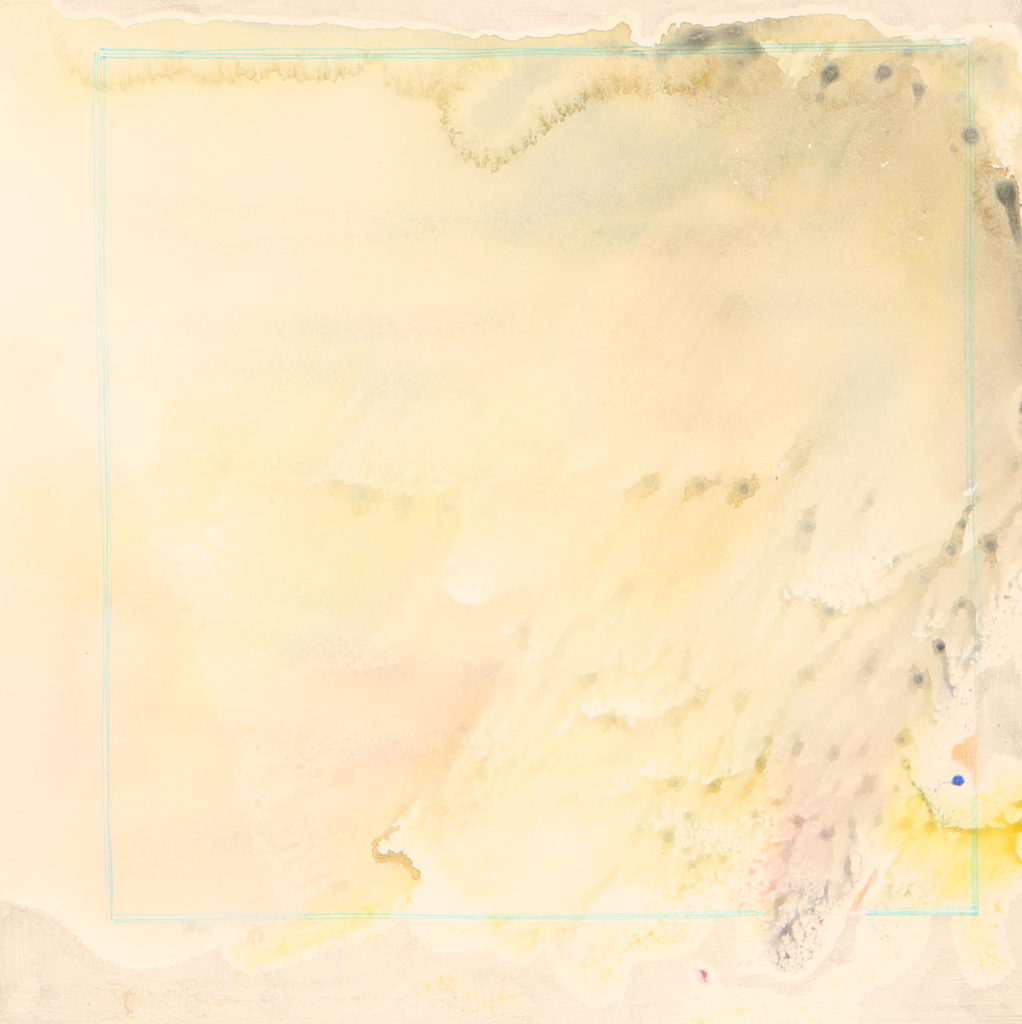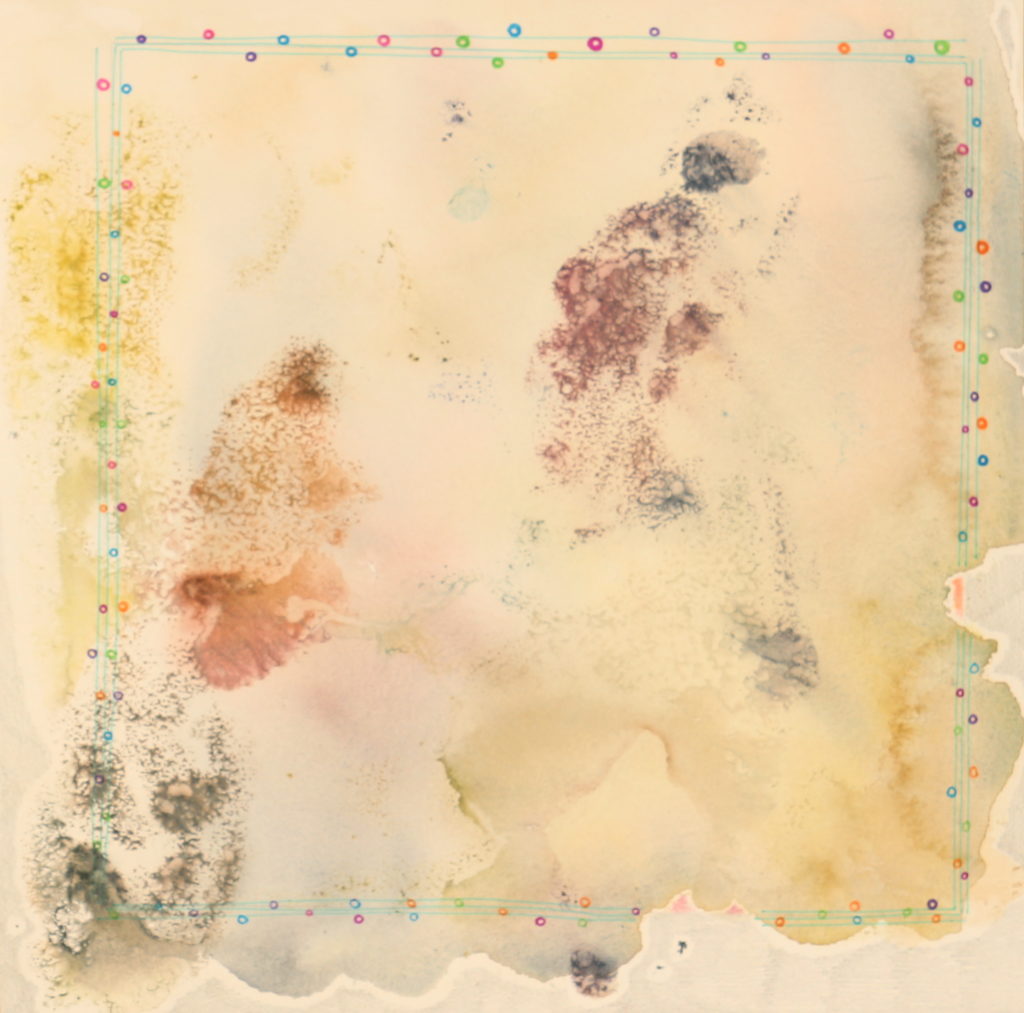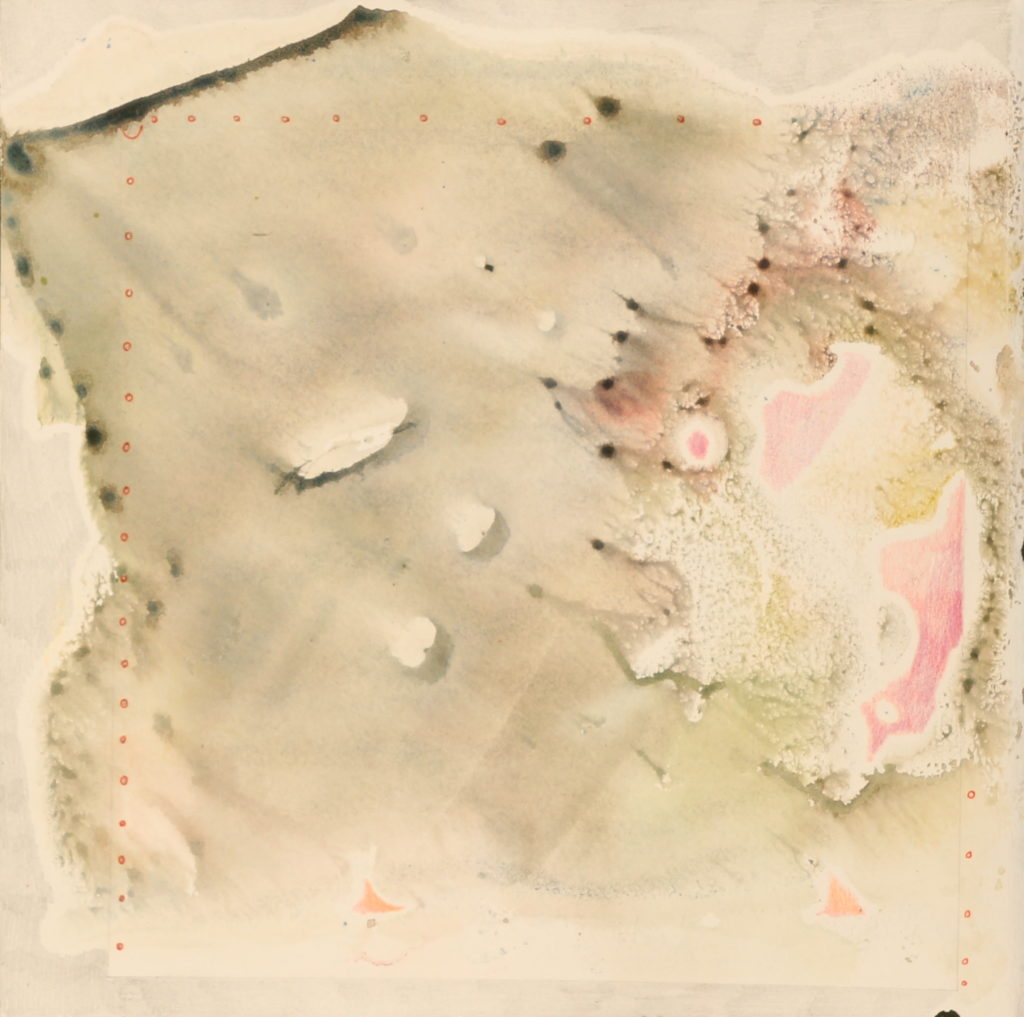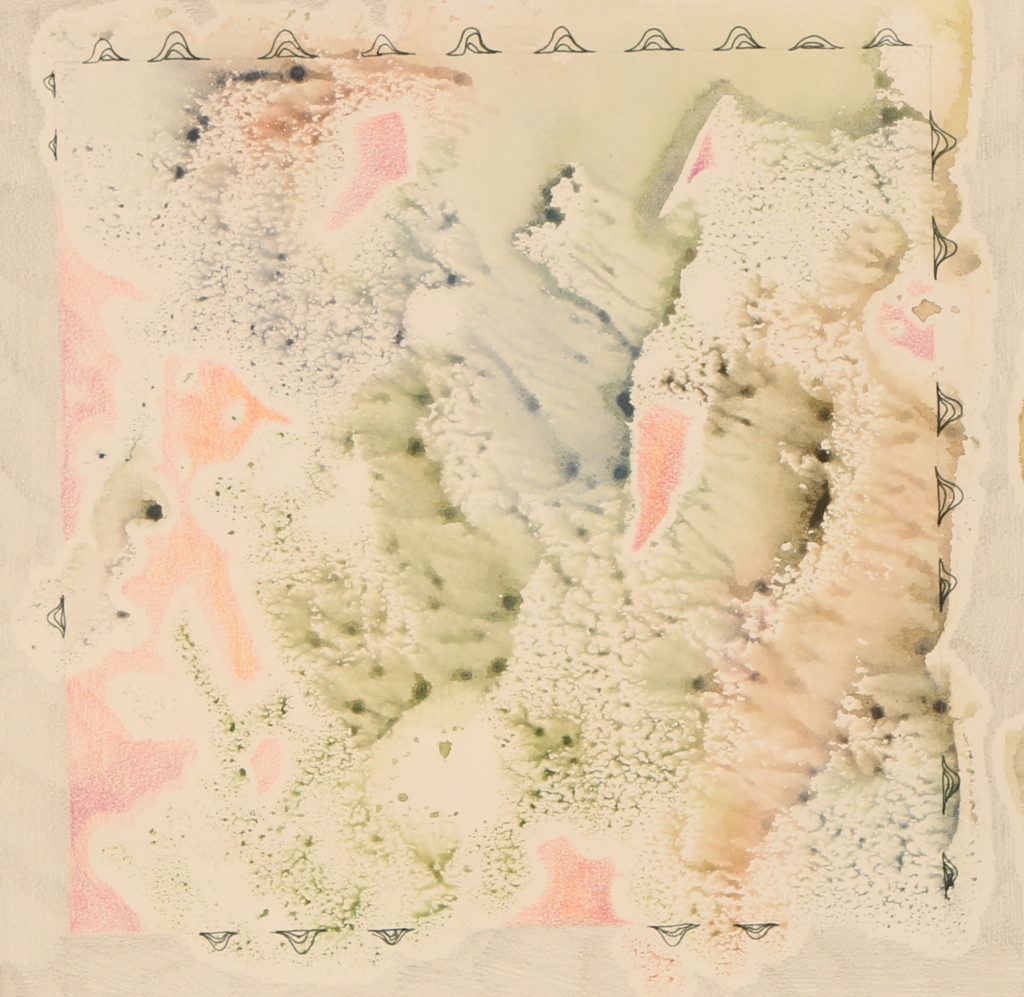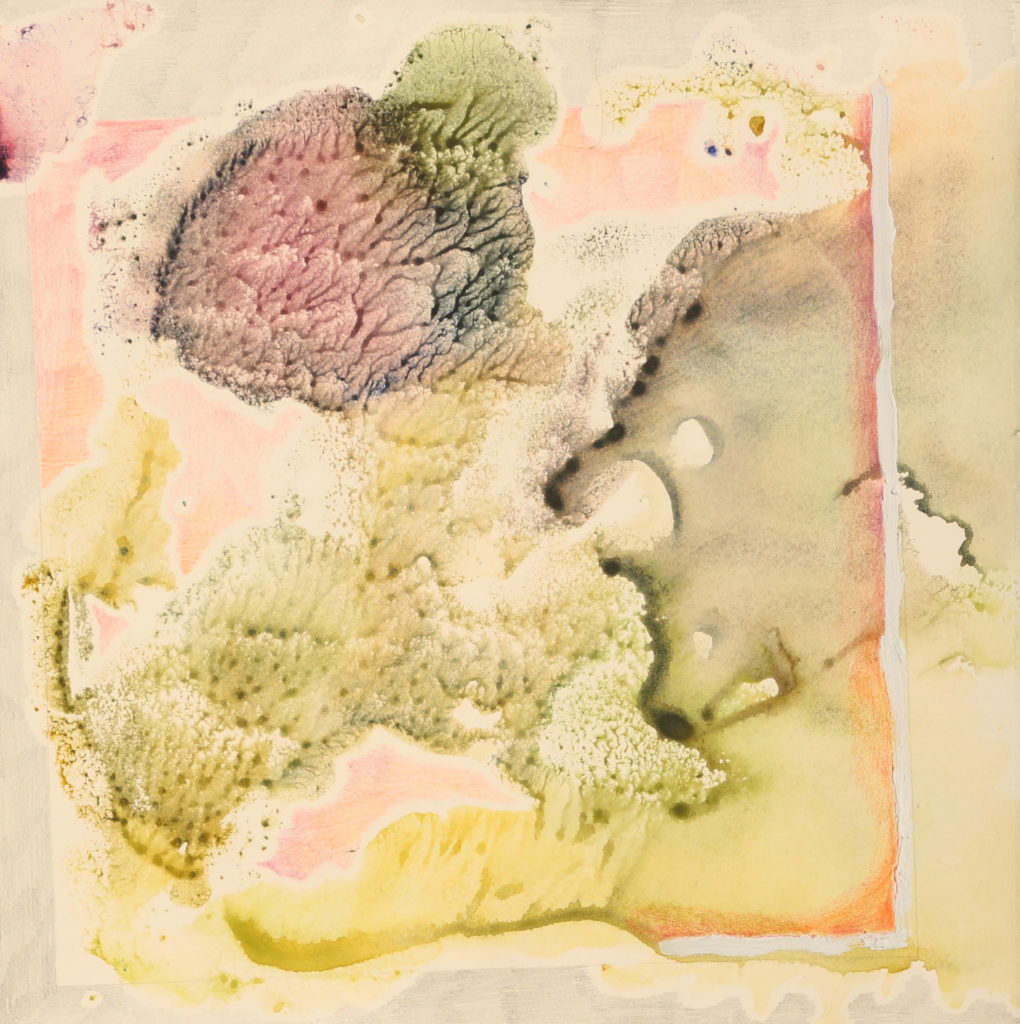Building a Framework on Top of Mystery
(Editor’s note: Casey Murano, our guest blogger, is a caretaker at Bethlehem Farm in West Virginia, and an artist. She writes, “At its essence, I approach art-making as a practice of transformation. My process draws on the wisdom of contemplative traditions and themes of pilgrimage–broadly, a journey through a landscape of some kind that prompts spiritual growth.” See more of her artwork at www.caseymurano.com.)
Leaves are hitting the ground, apples are dropping, and water droplets are cascading down the river…it seems appropriate that leading up to this first day of roof training, I’ve been tending to a fear of falling.
The idea of being on a roof makes me nervous. But as a new caretaker at Bethlehem Farm, I want to support our community’s shared mission of transforming lives, which includes running a low-income home repair program. When the time comes, I climb tentatively up the ladder. The top rung drops me off at twenty-four-ish feet off the ground. No guard rail in sight. Only a shiny, slippery, scarlet surface, steeply angled upward. I summon the will to press my foot on.
My center of mass follows onto the metal roof and with surprising gracefulness. Slowly, I learn to trust that my body will not let me tip over just because I am near the edge. Unexpected satisfaction in restoring this vital part of the house’s integrity soon emerges. The process of roofing is actually quite enjoyable! I give thanks for balance, extra grippy shoes, and heightened awareness. God’s grace is present here, reminding me to be fully awake to the wild sensations of life itself.
On the roof, doing the task well is my primary prayer, but I find myself contemplating the renewal of our spiritual homes, wondering how God is inviting us to repair our church. Some thoughts start to take shape (including some visual ones, featured at the bottom of this post!).
As my community members and I carefully send screw after screw into the ribs of the metal, I remember that we say, I am not worthy that you should enter under my roof before receiving Eucharist. With humility we join the centurion in referencing the limits of our dwelling places and the limitless, healing love of Christ. We are participants in a web of caring relationships, a cosmic communion that extends far beyond the walls of any building we construct. This interconnectedness challenges us to take healthy risks that bring us close to the edge, the boundary, those precarious places where the sometimes breezy, sometimes gusty breath of the Spirit blows.
In my interior landscape, I catch wind of the desire to design sanctuaries that support conscientious engagement with our ecosystem for future generations. St. Francis’ first attempt at rebuilding the church began with the physical structures and then addressed the institutional corruption. As was necessary then, several levels of repair are in order.
We can make sure our worship spaces align with our values. When the seating arrangement facilitates a sense of interconnectedness, the wood of the altar carries the story of where it was sourced from, the windows remind us of our friendship with the rest of creation, and the power sources we choose to use are renewable and energy-efficient, we can embody a commitment to living simply so that others can simply live. And each church will respond to the call uniquely, based on the specific gifts and needs of the congregation and the geographic situation.
Less concrete structures also shape our engagement in communion with the cosmos. For example, the language we use offers a lot to contemplate. I like sitting with the nuances of prepositions because they qualify the nature of relationships. What does it mean to be under a roof instead of on one? How can the words we use in church become more loving, less boundary ordered? Furthermore, for sustainable worship we need priests of all kinds–especially women and non-binary people who feel a call to minister–to share their collective wisdom. We must welcome active participation in liturgy for ages to come.
Surfacing also is a longing to experience church/communion/ministry in the movement of our daily lives. This prayer is answered with an experience. Working late, trying to get the final ridge cap on and the trim sealed, we had a tight deadline, and the homeowner had a burnt hot dog for us. We had already decided to do this final push. We were not worthy of this meal. We hardly had time to even think about eating this meal.
Until we remembered that receiving this hospitality is part of the Eucharistic celebration. So we set down our tools to partake in the cookout with our host. She shared her story, revealing how our home repair ministry enables her to continue accompanying friends through tough situations. It was a gift to witness her priesthood of being grounded in the local community and remember that sealing the roof does not take precedence over a ministry of presence.
When the roof is below my feet, the boundary between in and out becomes more nuanced. My roofing metaphor admittedly becomes full of inconsistencies. (i.e., I want to be warm, dry, and comfortable, yet I don’t want a boundary above our heads that prevents us from seeing the sky’s wispy palette unfold throughout the day.) Maybe spending time with Jesus, especially given his carpentry experience and richly layered parables, can provide guidance. Patient teachers, sacred stories, and sturdy sanctuaries can help us persevere through uncertainty.
In the spiritual memoir On The Threshold: Home, Hardwood, and Holiness, Elizabeth Jarrett Andrews reflects on the need for shelter when she writes, “We build a framework on top of mystery because we need someplace to live, some manner of surviving nature’s fury and our mundane daily needs.” A good roof need not be invincible, just able to sustain our presence in the paradox.
Indeed, there have been many learnings since the start of this roofing process. Technical skills, possibilities for rebuilding our sacred dwelling places with care, and growing comfort with being near fears and uncertainties. Perhaps now I am ready to step onto the roof to delight in the loving presence of God, trusting we are worthy to celebrate the source of life with all of creation.
Here are the images that emerged from this home repair site. Take some time to be with this artwork and contemplate how God is inviting you to create or repair dwelling places in your life to welcome movement of spirit. As you move through the sequence of images, notice the dialogue happening around the border–how does the relationship between shapes, colors and textures evolve as you move through the steps of repairing a roof? (The steps that correspond with each image, if it is helpful, are listed here.)
- Set up the ladder
- Pull off the old shingles
- Roll out titanium paper
- Hammer in button cap nails
- Pre-drill holes into the metal
- Trim with shears
- Screw sheets into the roof
- Tuck under inside closure strips
- Adhere outside closure strips
- Drill in the masonry screws
- Press down butyl tape
- Give thanks for shelter
(Note: Click on an image to enlarge.)


